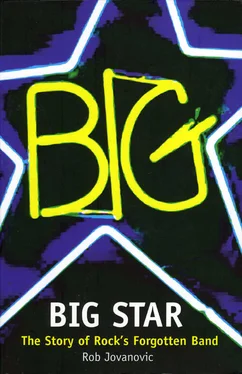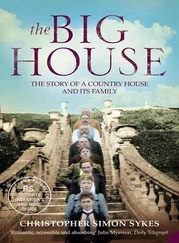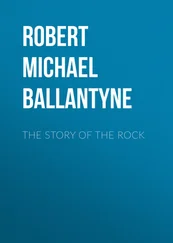By the turn of the twentieth century, Memphis had become the murder capital of the United States, even though its population barely exceeded 150,000. The drinking culture of the downtown area coupled with hundreds of gambling rooms created this chilling statistic. At this time the music there was mainly of the rowdy alehouse variety but that soon changed, thanks in large part to a man by the name of W.C. Handy.
W.C. Handy moved to Clarksdale, Mississippi, just south of Memphis on Highway 61, in 1903. Around Clarksdale were thousands of blacks working the cotton fields in the stifling heat. Their ‘hollers’ in the day and their singing on shantytown porches at night caught the ear of the twenty-year-old who was an accomplished cornet player. Legend has it that while waiting for a train he was transfixed by a young man plucking away at a battered guitar and singing the blues. Two years later he moved to Memphis and was soon a regular player on Beale Street, helping to bring the blues to a wider audience. In 1909 his ‘The Memphis Blues’ became a massive hit: it is credited as being the first blues song actually committed to paper. Handy’s dragging of the blues away from the cotton fields and into places where a white audience could hear them was a major step, changing Beale Street and Memphis forever.
While liquor and drugs formed an underground economy for much of Memphis’s local government, Beale Street was the only place in the south that allowed the black population to be actively involved in any business ventures, even if most of them were illegal. 5For black businessmen the Beale Street region was the financial and social epicentre of the south if not the whole country. Cocaine had spread through western Tennessee when the Coca-Cola company set up a bottling plant nearby and, though cocaine was removed as an active ingredient in 1905, the local dealers had already set up direct links with South America for their supplies.
The collision (and collusion) of black and white cultures spilled over into music. The 1920s saw a second wave of blues men. Walter ‘Furry’ Lewis (who in 1975 would open for the Rolling Stones in front of fifty thousand people) and ‘Sleepy’ John Estes further entrenched the city as ‘Home of the Blues’ while just down the road Robert Johnson was supposedly making his pact with the devil. The Great Depression was fast approaching but the effects of the still-thriving cotton trade helped to soften the economic burden on Memphis. Prohibition was introduced but the drinking didn’t slow down, it just became less visible.
Outside the Beale Street area, Memphis was still cut in half by colour restrictions. Most hotels, restaurants, public toilets and cinemas were white only. This was manageable while the blacks were in the minority but a great flood in 1937 meant many thousands of black farm workers lost their homes and moved into the city. World War II boosted the Memphis economy with the building of the Millington Naval Air Station, an Army depot and the Mallory Air Force Depot. The fact that cotton prices rose steeply during wartime also helped the local economy.
The mayor eventually clamped down on the Beale Street vices, which put many black businessmen out of business or forced them just across the river into West Memphis, which was actually over the state line with Arkansas and out of his jurisdiction. Anyone wanting a night out with an edge to it now had to cross the Memphis-Arkansas Bridge that was built in 1949.
Much of the music that the night-clubbers crossing the bridge were going to listen to was a new mix of Memphis jazz and blues played on the newly electrified guitars that were becoming more popular. The resultant sounds were christened ‘rhythm and blues’. At the time record labels were still somewhat mystified by the new forms of music and used terms such as ‘race music’, ‘ebony music’ or ‘sepia music’ to define and catalogue the rapidly growing market. Despite the politically incorrect naming of the product, rhythm and blues and its offspring – rock’n’roll – would cross all racial boundaries and sweep young America off its feet.
This was never more apparent than on Memphis radio. The white owners of the WDIA station, John Pepper and Bert Ferguson, made the earth-shattering decision to change to an all-black play format. It was the first black station in America and ensured that Memphis had a dedicated blues station. Soon after the broadcasts started, a young man by the name of Riley King walked in off the street and asked for a job, which he got, later changing his name to ‘Blues Boy King’ or ‘B.B. King’. He went on to become a blues legend in his own right, with his first chart-topping single, ‘Three O’ Clock Blues’, coming along in 1952. WDIA proved one of the Black America’s biggest cultural breakthroughs, especially in the South, where racism was rampant. 6Including the rural areas surrounding Memphis, the potential listenership was almost half a million black Americans. With cross-town competitor WHBQ also spreading the word of black music and a new type of popular music by the name of ‘rock’n’roll’, Memphis soon had twin points of attack on the record buyers of America.
With Beale Street fast fading into musical folklore, a new up-and-coming recording studio shook the world. While the first half of the century had seen the city gaining a reputation as a hotbed of blues and jazz excellence, the second half belonged to rock’n’roll. But then, as now, a high proportion of Memphians either didn’t know or didn’t care what was going on on their own doorstep while the sounds of Memphis were being lauded around the world and especially in the UK, as the Beatles and Rolling Stones would later prove. The Beatles’ cover of Chuck Berry’s ‘Memphis, Tennessee’ was just one example of their love of Memphis music, while the Stones’ championing of the blues was legendary.
It was in 1953 that this musical revolution unwittingly began. Elvis Presley walked into the Memphis Recording Service to make his first single. The owner of the studio was thirty-one-year-old Sam Phillips. He’d opened the studio at 706 Union Avenue in January 1952, catering to people who were willing to pay to record their own piece of vinyl. Presley paid his money, cut his songs and left. It would be another two years before he returned to record a single for Phillips’s own Sun label.
The early 1950s record-buying public was eating up the easy listening sounds of Perry Como, Rosemary Clooney and Bing Crosby but that was all about to change. Phillips with his Sun label was now recording B.B. King and Howlin’ Wolf while his friend the local DJ Dewey Phillips would play them on his WHBQ radio show, ‘Red Hot & Blue’. It was Dewey Phillips who got hold of a test pressing of the first Presley single for Sun, ‘That’s All Right, Mama’, and proceeded to play it over and over on his show. The response was phenomenal; the post-war boredom vanished for the nation’s teenagers and a new mix of music and sex flooded into every American living room.
Suddenly parents and children were not listening to the same music any more. James Dean became a new kind of screen idol and rock’n’roll provided the rebellious soundtrack. Record stores and music shops seemed to spring up on every street. In Memphis the success of Presley helped open the door for the likes of Chuck Berry and Little Richard. Presley was basically a white man singing black music. Sun Records made the most of the opening as young men from around the South travelled to Memphis to try their hand at being a rock’n’roll star: Carl Perkins, Jerry Lee Lewis and Johnny Cash were just some of the ones that became superstars.
While the 1920s were the golden age of Memphis Blues and the 1950s were the glory years of rock’n’roll, the 1960s saw Memphis emerge as the bona fide centre of soul. The prime mover behind the new direction of Memphis’s music was Stax Studios.
Читать дальше











